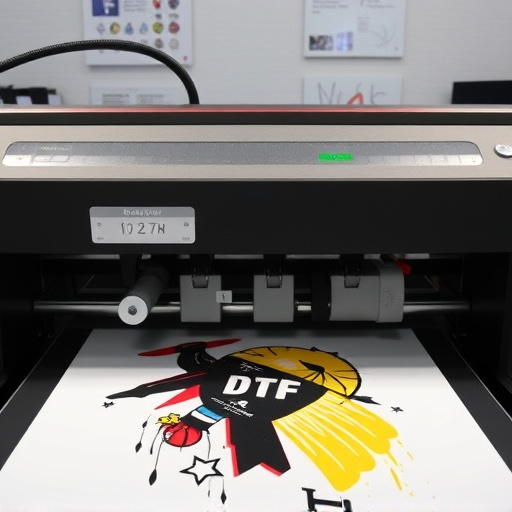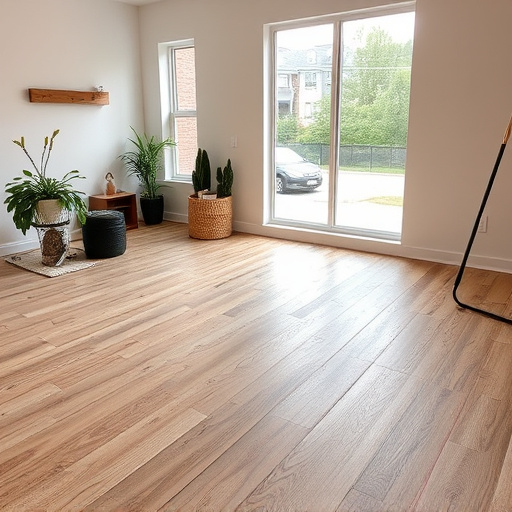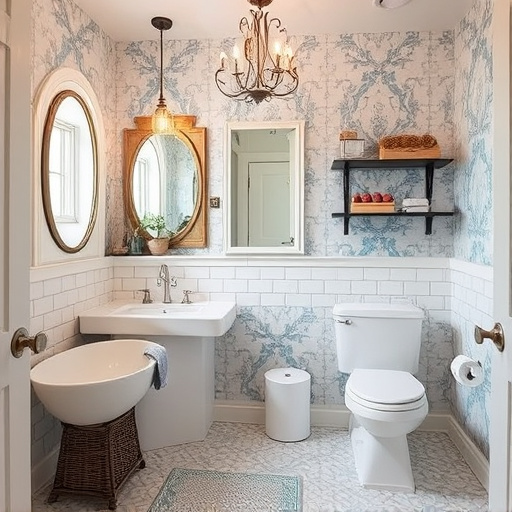Preparing a concrete subfloor is crucial for successful flooring installation, involving crack repair, cleaning, and moisture control with a meter. Choosing suitable flooring (e.g., vinyl, laminate, hardwood) based on wear, ambiance, and maintenance needs ensures aesthetics and longevity. Installation steps include repairing the surface, laying a vapor barrier, installing underlayment, and tightly fitting chosen flooring for a seamless finish.
Thinking of installing new flooring over your concrete subfloor? This comprehensive guide is your starting point. From understanding concrete subfloor preparation to choosing the right flooring for your project, we’ve got you covered. Then, follow our step-by-step instructions for a successful flooring install, ensuring a durable and aesthetically pleasing finish. Discover expert tips and tricks to make the process seamless, regardless of your DIY skill level.
- Understanding Concrete Subfloor Preparation
- Choosing the Right Flooring for Your Project
- Step-by-Step Guide to Installing Flooring Over Concrete
Understanding Concrete Subfloor Preparation

Before laying any flooring, preparing the concrete subfloor is a crucial step. Concrete is a sturdy base but requires proper treatment to ensure a smooth and durable finish for your flooring install. This involves several key processes. First, inspect the concrete for any cracks or imperfections; repair these issues using appropriate materials to create a level surface. Then, clean the concrete thoroughly to remove dust, debris, and any residual oils or adhesives from previous installations.
A crucial aspect of subfloor preparation is moisture control. Concrete can be prone to moisture absorption, which may affect the integrity of your flooring, especially in areas like bathrooms undergoing renovations. Use a moisture meter to test and ensure the concrete’s humidity level is within acceptable limits for the flooring you plan to install. In cases of high moisture content, specialized treatments or materials might be required to prevent damage from water-related issues, ensuring a successful home renovation project with long-lasting results.
Choosing the Right Flooring for Your Project

When embarking on a flooring install project over concrete, selecting the perfect flooring is just as crucial as the installation process itself. The right flooring not only complements your home’s aesthetic but also offers functionality and durability. Consider factors like traffic patterns, desired ambiance, and long-term maintenance when making your choice. For instance, high-traffic areas might require scratch-resistant and easy-to-clean options like vinyl or laminate, while bedrooms or living rooms could embrace the warmth and comfort of hardwood or carpet.
Remember that whole house remodels offer an opportunity for customization, allowing you to create a cohesive look with matching flooring throughout your space. If you’re up for a challenge, explore unique materials such as concrete overlays or even creative DIY solutions. Home improvement services often provide expert advice on selecting flooring that aligns with both your needs and budget, ensuring your project is a success.
Step-by-Step Guide to Installing Flooring Over Concrete

To install flooring over concrete, start by preparing the surface. This involves scanning for any cracks or holes and repairing them using a concrete patch. Once the concrete is smooth and even, sweep and clean it thoroughly to remove dust and debris. Laying down a vapor barrier is next, which helps prevent moisture from rising through the concrete. This step ensures your new flooring lasts longer.
Afterward, measure and mark where your floor joints or walls will be, using a pencil or chalk line. This guides the placement of your flooring planks or tiles accurately. For a seamless look in whole house remodels, consider customized home renovations to match your unique style. Next, install any required underlayment, which provides an additional layer of cushioning and noise reduction. Finally, start laying down your chosen flooring, whether it’s hardwood, laminate, or tile, ensuring each piece fits tightly together like a symphony of structure.
Installing flooring over concrete can be a rewarding DIY project, offering both durability and versatility. By understanding your subfloor, selecting the right flooring type, and following a meticulous installation process, you can achieve a strong, long-lasting finish. Remember, proper preparation is key to a successful flooring install, ensuring your new floor not only looks great but also stands the test of time.














